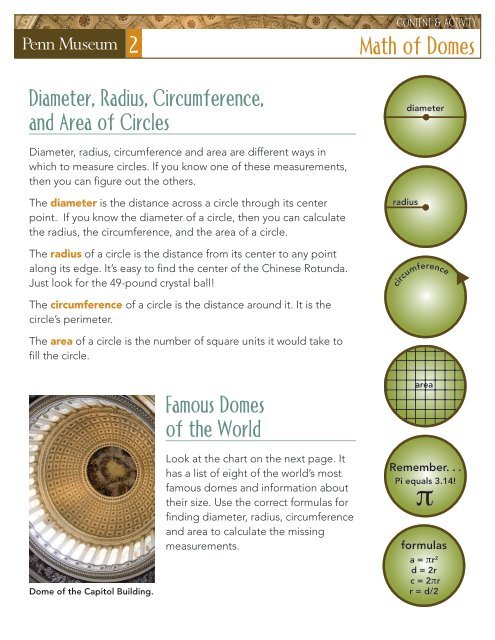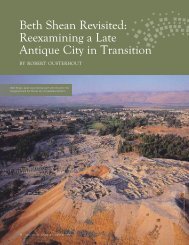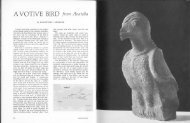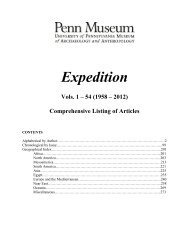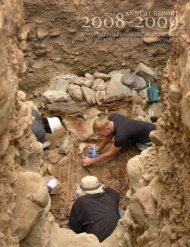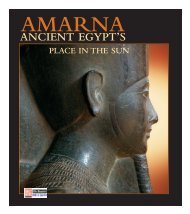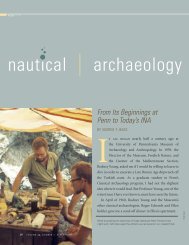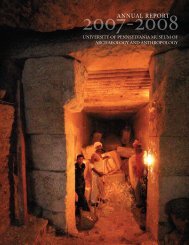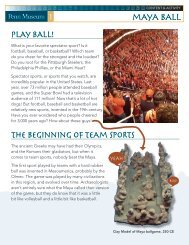Ancient History Math Mystery
Ancient History Math Mystery
Ancient History Math Mystery
You also want an ePaper? Increase the reach of your titles
YUMPU automatically turns print PDFs into web optimized ePapers that Google loves.
2<br />
Diameter, Radius, Circumference,<br />
and Area of Circles<br />
Diameter, radius, circumference and area are different ways in<br />
which to measure circles. If you know one of these measurements,<br />
then you can figure out the others.<br />
The diameter is the distance across a circle through its center<br />
point. If you know the diameter of a circle, then you can calculate<br />
the radius, the circumference, and the area of a circle.<br />
The radius of a circle is the distance from its center to any point<br />
along its edge. It’s easy to find the center of the Chinese Rotunda.<br />
Just look for the 49-pound crystal ball!<br />
The circumference of a circle is the distance around it. It is the<br />
circle’s perimeter.<br />
The area of a circle is the number of square units it would take to<br />
fill the circle.<br />
Dome of the Capitol Building.<br />
Famous Domes<br />
of the World<br />
Look at the chart on the next page. It<br />
has a list of eight of the world’s most<br />
famous domes and information about<br />
their size. Use the correct formulas for<br />
finding diameter, radius, circumference<br />
and area to calculate the missing<br />
measurements.<br />
CONTENT & ACTIVITY<br />
<strong>Math</strong> of Domes<br />
radius<br />
diameter<br />
circumference<br />
area<br />
Remember. . .<br />
Pi equals 3.14!<br />
π<br />
formulas<br />
a = πr 2<br />
d = 2r<br />
c = 2πr<br />
r = d/2<br />
▲


